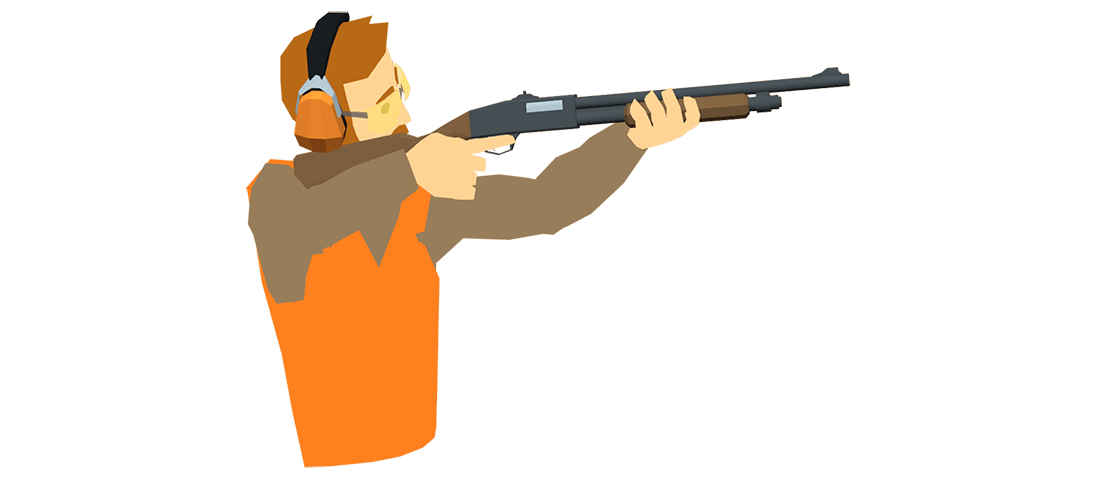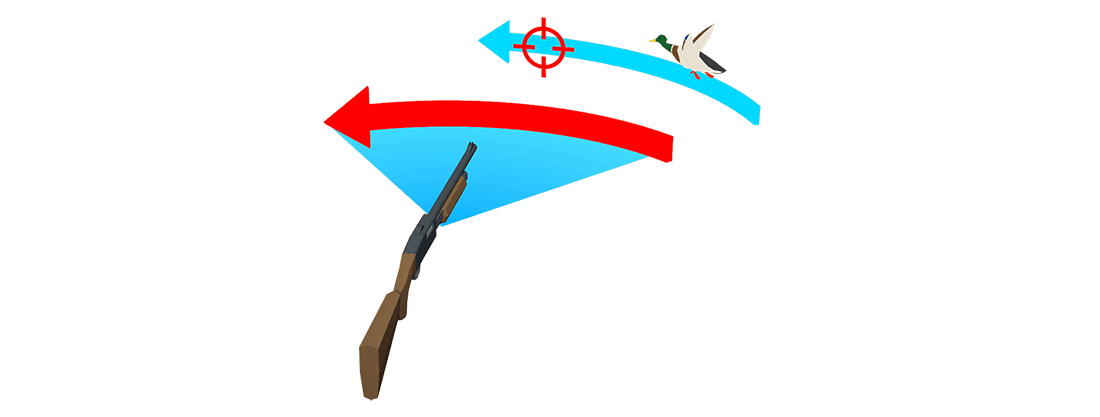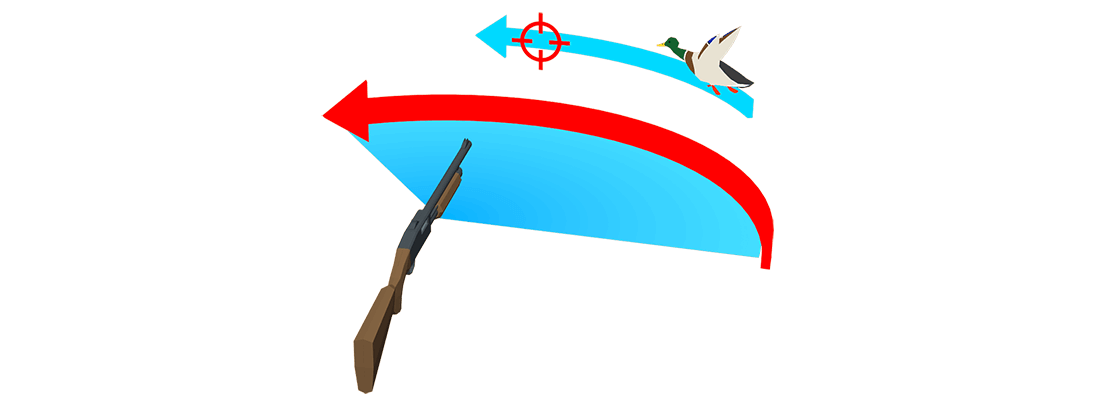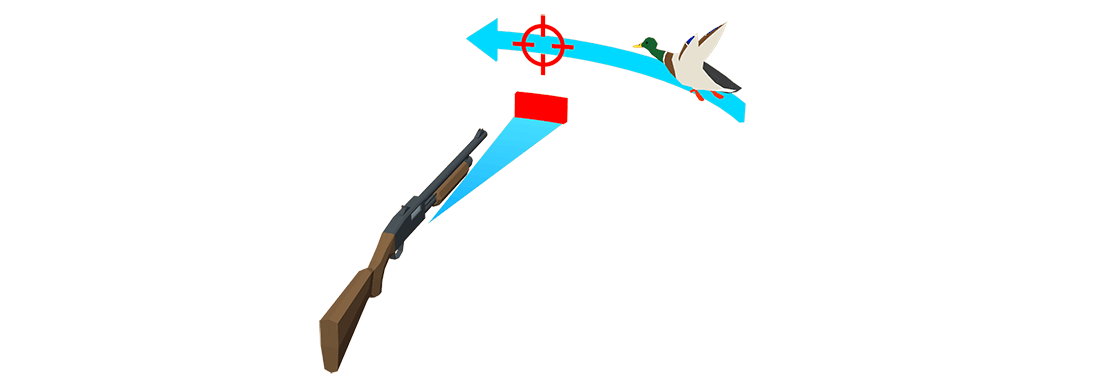Shotgun Shooting Tips Sustained Lead - Swing Through - Snap Shooting
Shotgun Shooting
Shotgun shooting is different from rifle shooting.
- While a rifle is precisely aimed, the shotgun is pointed.
- The trigger of a shotgun is pulled rather than squeezed.
Pinpoint aiming and controlled breathing are not as crucial in shotgun shooting. Shotgun shooting is more about speed, reflex and flexibility. The position of the body is very important. These movements need to be performed in a smooth, coordinated manner.
Proper Stance

Stance is the position of your body as you prepare to shoot. Body position for shotgun shooting is comparable to a boxer's stance. Your legs should be spread comfortably apart with one foot ahead of the other. Your front foot should point toward the target. The back foot should be at a right angle to the target. Your shoulders should not be square to the target, but rather be held at a quartering angle. To prepare yourself for a shot, lean slightly forward and place more weight on your front foot. This will allow for better recovery and balance once the shell is fired.
Mounting the Shotgun

Now that we have a good position, we need to know how to bring the shotgun into a good shooting position. The shotgun is raised deliberately and brought to the cheek and shoulder simultaneously. By practicing this routine, the shotgun will be in the same position each time it's fired. This consistency is important for accurate shooting. It is a common mistake people make to bring the firearm to the shoulder first and drop the head on the stock instead of bringing the shotgun to their cheek.
Keep both eyes open and focused on the moving target and not on the bead sight. Do not aim the shotgun, you point it.
Follow Through Shooting

Once the shotgun is in firing position, we are now ready to follow our moving target. Our body and our firearm must move together to follow the target. Correct follow through often makes the difference between a clean shot and one that wounds or misses a game bird. Follow through means that the correct stance and sight picture are maintained after the firearm is discharged. A conscious follow through is essential when shooting a moving target.
Leading the target
Leading the target is a technique of shooting ahead of a moving target, so that the projectile will intercept and collide with the target at a predicted point.
For example; if you shoot directly at a moving target, by the time the projectile reaches it, the target will have already passed by. To hit a moving target you have to shoot ahead of it which is why leading the target is important to ensure a clean hit.
The three most common methods of leading are:
- swing through
- sustained lead
- snap shooting
Remember to point your shotgun and lean into the shot. Don't forget that the trigger of a shotgun is slapped rather than squeezed.
Swing Through Shooting

The swing through is the recommended technique for beginners. The shooter points behind the moving target and crosses it faster than the target moves, so that the muzzle of the gun passes the target, pulling the trigger just as the bead passes the bird. Follow through is critical! The speed and range of your target will automatically influence how fast the barrel is swung. Always keep the barrel moving until you see the bird crumple.
Sustained Lead Shooting

The sustained lead is held ahead of the target, and the shotgun is fired without stopping the swing. With the sustained lead, you must make your own adjustments for the speed of the target and the distance from you to the point of impact. You estimate the length of lead necessary to hit the target. You maintain that lead as you swing with the target, fire, and continue the swing. This decision-making is why the sustained lead is a difficult skill to master.
Snap Shooting

The shotgun is fired at a point ahead of the target without continued barrel swing. This technique is used if the bird is close and in front of you. In any other circumstance this technique is not recommended.